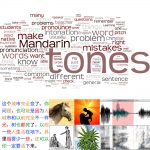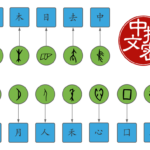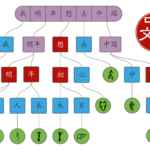Articles in the ‘Essential articles’ category
-
The three factors that determine how much Chinese you learn
When learning Chinese, your progress depends on three factors: the content you study, the methods you use, and the time you dedicate. To achieve your goals quickly and efficiently, strive to optimise all three!
Read → -
The Hacking Chinese guide to Mandarin tones
Learning tones is a unique challenge for most learners of Chinese. What are tones? How important is it to learn tones? And how do you learn to both hear and pronounce them?
Read → -
Improving your Chinese pronunciation by mimicking native speakers
The best way to improve your Chinese pronunciation is to mimic native speakers. But why, and how exactly should you go about it?
Read → -
Take responsibility for your Chinese learning now
You should be responsible for your own learning, and if you outsource that to someone else, the results might be disastrous. This might sound obvious, but I think the problem is widely overlooked, especially by students enrolled in language courses.
Read → -
How to learn Chinese pronunciation as a beginner
Pronunciation is an important, yet often neglected part of learning Chinese. The earlier you get the sounds and tones down, the better, but how should you approach learning these things as a beginner?
Read → -
Time quality: Studying the right thing at the right time
Many students think that learning a language is limited to going to class, working your way through difficult texts or having conversations with native speakers. These all contribute to your learning, but learning is not limited to things you can schedule in your calendar. If you think of it like that, you’ll miss so many learning opportunities!
Read → -
The building blocks of Chinese, part 6: Learning and remembering compound words
Compound words in Chinese can look confusing at first, but once you see the patterns, learning and remembering them becomes much easier.
Read → -
The building blocks of Chinese, part 4: Learning and remembering compound characters
The key to learning Chinese compound characters is to learn the building blocks and how they fit together, including both the function of each component and the structure of the compound. Add some clever memory techniques and you’ll be able to dramatically increase the speed and efficiency of your learning!
Read → -
The building blocks of Chinese, part 2: Basic characters, components and radicals
Most Chinese characters are compounds consisting of two or more components, but some components are in themselves compounds that can be further broken down. But how do you know where to stop? And how do you learn and remember the most basic building blocks?
Read → -
The building blocks of Chinese, part 1: Chinese characters and words in a nutshell
Learning to read and write Chinese is a daunting task, but the challenge becomes more manageable if you focus on learning the building blocks, learning how components form characters and how characters form words. This article is the first part in a series helping adult students make sens of Chinese characters.
Read →









